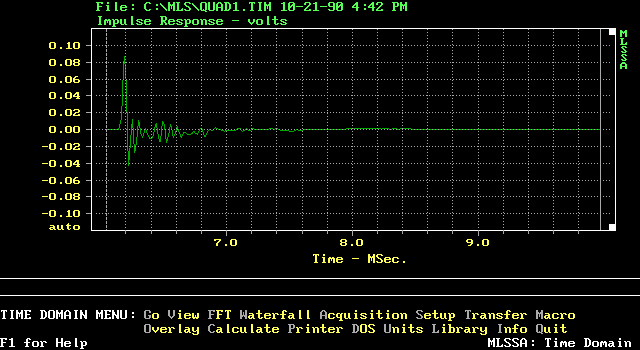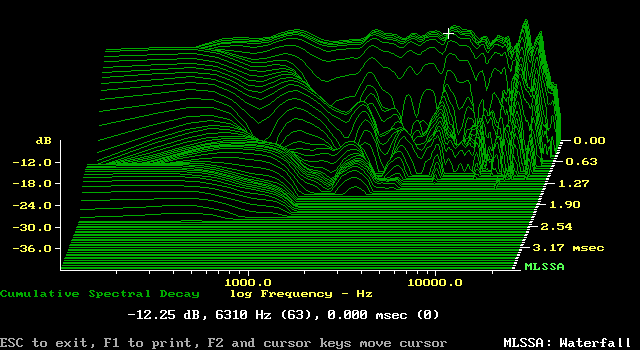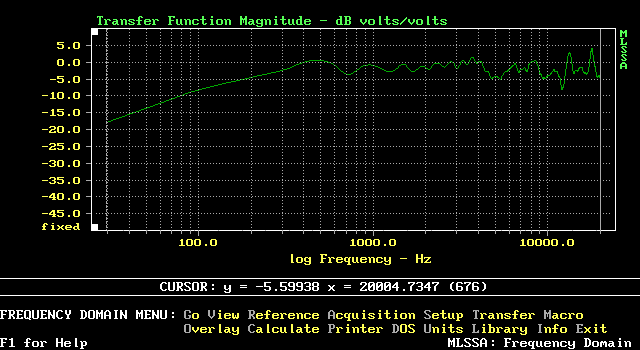QUAD ESL 57

My long-time Portland friend Mike Spurlock owned a set of the classic Quad ESL57's, and these were some of the first speakers I measured. Actually, he had not just two, but four ESL57's, and built the famed "stacked Quad" array. Was it any better than the traditional setup? Umm, it was different. More powerful, of course, and also more bass, but the cohesion was a bit down - old-school Quads are directional under the best of circumstances, and stacking them makes it worse. Kind of a mixed bag, in other words, since the increase in dynamic range is so welcome.

Since I've always liked the Quads (I first heard them in Hong Kong at Radio People in 1962), the Ariels are balanced to sound like a slightly warmer ESL57 - note the similarity in response? (Go ahead and open another browser window, and compare the two.) Don't be fooled by the ESL57's apparent rolloff below 400 Hz; this is an artifact of the short time window and the Quad's location in the room. In order to get reliable low-frequency measurements, it's common practice to separately measure below 300 Hz using nearfield techniques, and join the two graphs together.

This is the really impressive graph, showing a result rarely seen with dynamic drivers. The impressively rapid clearing in the midband is especially noteworthy; the absence of a cabinet or a crossover is quite evident in the 1 to 5 kHz region. The apparent energy storage above 10 kHz is probably an artifact of multiple arrival times from the tweeter panel, which is about two feet high.
The famed midrange clarity of the ESL57 is the result of very low energy storage - as evident here - and also very low IM distortion. It's interesting to compare the frequency response and waterfall graphs of the Ariel and the ESL57; the Ariel has a noticeably flatter frequency response, but the ESL57 has a dramatically superior waterfall graph.
As you can see, electrostat excel in low energy storage, which is quite a different thing than the leading-edge rise-time that people think of when you speak of "transient response". The transient response that is most audible isn't the leading edge, but the way the speaker behaves when the sound stops. The stored energy of the speaker interferes with the natural harmonic decay of musical instruments, as well as interfering with spatial perception. The ideal speaker - which is still very far away - would immediately decay to zero, allowing us to hear the instruments in all their beauty.
This is where different technologies - electrostats, direct-radiator dynamics, and horns - are very different indeed. Each of these technologies has its strengths and weaknesses; unlike audio-fundamentalists, I don't think there is any "best" in an objective sense. When you improve a speaker in one area, performance usually gets worse in another. You have to pick and choose the aspects of performance that are most important to you.

April 6th, 1990. I suspect this is probably one of the first MLSSA measurements I made; judging from all the reflections, the Quad is probably sitting in the corner, and the floor reflection is fairly obvious. It might also be the other Quad of the pair; Mike was still restoring them at this point, and I have no idea how healthy this one was compared to the other one.

Notwithstanding the time clutter, the frequency response is very similar. There are some nasties between 5 and 10 kHz, though, so maybe this ESL57 needed some work on the tweeter panel.

The waterfall graph, although not as beautiful as the one above, isn't as bad as I expected, given all the crud in the time display. There are plenty of dynamic speakers a lot worse than this, as we will see on the following pages.
Text and Pictures © Lynn Olson 2006.